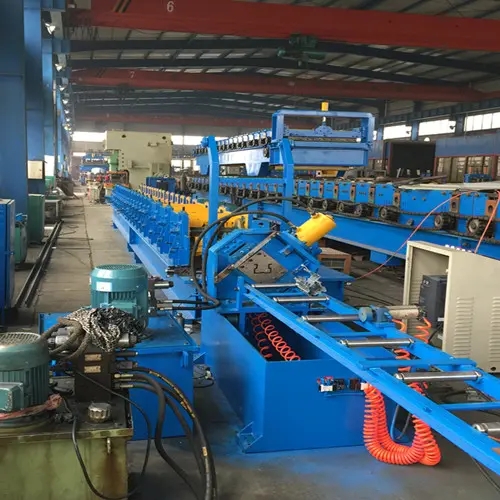
Understanding U-Channel Forming Machines A Comprehensive Overview
U-channel forming machines are specialized tools that are widely used in manufacturing various structural components, especially in the construction and automotive industries. These machines are designed to shape metal sheets into U-shaped channels, which have a myriad of applications due to their strength and versatility.
What is a U-Channel?
Before delving into the workings of forming machines, it’s essential to understand what a U-channel is. A U-channel, also known as U-beam or U-section, is a metal profile that resembles the letter U. This structural shape is characterized by its two vertical legs connected by a horizontal base, providing significant structural support. Common materials for U-channels include aluminum, steel, and stainless steel, each chosen based on the specific requirements of the project.
The Importance of U-Channel Forming Machines
U-channel forming machines play a pivotal role in the production of these components. They enable manufacturers to create precise and uniform U-channels efficiently. The importance of these machines is underscored by several key factors
1. Efficiency U-channel forming machines allow for high-speed production, which means that manufacturers can meet large orders in a shorter timeframe. This is particularly beneficial in industries that demand rapid turnaround times.
2. Customizability Many modern forming machines can be adjusted to produce various sizes and thicknesses of U-channels, catering to specific customer needs. This capability enhances the flexibility of production lines.
3. Cost-Effectiveness The automation involved in U-channel forming reduces labor costs and minimizes waste, making the manufacturing process more economical. Additionally, high precision reduces the need for rework, further saving costs.
4. Quality Control Automated forming machines are designed to maintain consistent quality and standards in production. This reliability is crucial for industries where structural integrity is paramount.

How U-Channel Forming Machines Work
The operation of a U-channel forming machine generally involves several key steps
1. Feeding Metal sheets are fed into the machine, usually using a conveyor system. The width and thickness of the sheets can be adjusted based on the desired dimensions of the U-channel.
2. Forming The machine uses rollers or dies to bend and shape the metal sheets into the U-channel form. This process can vary depending on the machine type. Some machines utilize a series of rollers that progressively shape the material, while others may employ hydraulic or pneumatic presses for forming.
3. Cutting and Finishing After the U-channel is formed, it may be cut to specific lengths required by the order. Additional finishing processes, such as trimming, welding, or surface treatment, might be employed to enhance the final product's quality.
4. Quality Inspection Finally, the U-channels are inspected for compliance with designated specifications, ensuring that they meet the necessary structural standards before they are dispatched.
Applications of U-Channels
U-channels are widely utilized across various sectors. In construction, they are often used for framing, structural supports, and as guides for various installations. In the automotive industry, they can be found in the manufacturing of vehicle frames and supports, where strength and durability are crucial. Additionally, U-channels are employed in signage, furniture, and electrical applications, showcasing their versatility.
Conclusion
In summary, U-channel forming machines are integral to modern manufacturing processes. Their ability to produce high-quality, customizable U-channels quickly and efficiently has made them invaluable in multiple industries. As technology continues to evolve, we can expect even more advancements in forming machine capabilities, further enhancing their role in production and design innovation. Understanding these machines and their outputs is essential for anyone involved in manufacturing, as they directly impact the quality and reliability of the structures we depend on every day.